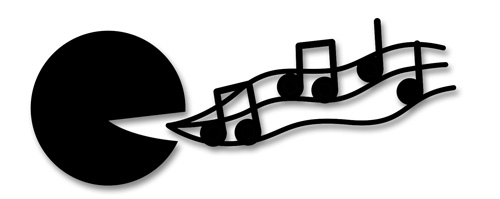Continuing on from our Interval Ear Training Help article, this time we’ll dive into some specific tips and tricks you can use to learn interval recognition more easily.
First we’ll look at tips for recognizing particular types of interval, and then we’ve got 3 helpful tricks to use in your own interval ear training approach.
Note: If the material below seems too advanced, you may want to start by reading “How to learn intervals”.
Interval Ear Training Tips
Here are a few general tips for your training strategy when it comes to learning intervals:
Tip 1: Choose your method
Don’t assume that whatever approach you’re familiar with is the only way. Explore different interval ear training methods and see which suits you. Each has their own corresponding interval recognition exercises and though they’re all effective, some will work better for you than others.
Tip 2: Mix-and-match
One of the wonderful things about ear training is how complementary all the different types of practice are. Spend some time on intervals—and your chord skills improve. Spend some time on chord progressions—and you find you can improvise more easily.
Even within a particular focus like interval ear training, practising different things in different ways will build up your listening skills quickly and robustly.
Don’t be afraid to combine methods and mix-and-match them. Be serious and dedicated to pursuing your goal, but choose the techniques (and combinations of techniques) which appeal to you and get you results.
Tip 3: Choose your own reference songs
Using interval reference songs is a great way to get started in interval ear training, but often the examples given aren’t songs you know or particularly like. Work out the intervals used at the start of songs you do like, and assemble your own personal set of interval recognition songs to use. Interval training will be a lot more fun once you have!
Tips for Recognizing Intervals
Here are some specific tips for recognizing the different types of interval.
Some of these serve just as a starting point to get to know the interval. Once you begin to get the hang of it, start practising with the interval in different musical contexts to make your recognition skills more robust and reliable.
Recognizing Seconds
The main point of reference here is the major scale. You’ve probably played countless scales on your instrument, and if not you’ve still probably heard them enough to know their sound. Listen for how an ascending major second sounds like you’re beginning to play a scale. Listen for how an ascending minor second sounds like you’re reaching the completion of the scale.
Recognizing Thirds
Similarly, you’ve probably played a lot of arpeggios. Listen for how ascending major thirds sound like the start of a major scale’s arpeggio, and minor thirds like a minor scale arpeggio.
For descending thirds, you might listen for the major third sounding like the classic “doorbell sound”, and the minor third like a children’s sing-song of “din-ner”, or the teasing “nee-ner, nee-ner”.
Recognizing Fourths and Fifths
These are typically easy to distinguish from thirds and sixths, but hard to distinguish from one another. This is partly because they are each other’s inversion, and quite similar in their overall size. The best way to get started telling fourths from fifths is to listen to one after the other repeatedly. You can do this with our RelativePitch app, play them yourself on a piano, or use an interval recognition practice track like this one:
This will tune your ear in to how a perfect fifth sounds beside a perfect fourth. Then, when you hear an interval you think is a perfect fourth or fifth, sing through that pattern in your head. You’ll find you instinctively know whether what you heard is the beginning or the middle of that “perfect fourth, perfect fifth, perfect fourth” pattern.
Recognizing Tri-tones
(a.k.a. augmented fourth, diminished fifth)
The thing about a tri-tone is that it really sticks out! There are musical contexts where it doesn’t sound too strange, but the interval in isolation has a striking sound to it. So “sing” it in your head and listen for that characteristic dissonance.
You can also leverage your knowledge of fourths and fifths by remembering that they bracket the tri-tone: it is the only interval larger than a perfect fourth and smaller than a perfect fifth. Audiate the perfect fourth and the perfect fifth from the interval’s root note and see if the interval’s top note lies between them. If so, it must be a tri-tone!
Recognizing Sixths
There are two helpful tips for recognizing sixths. First, the major/minor quality comes across quite clearly. It isn’t quite the same character as with major/minor thirds or triad chords but it is similar, and listening for this difference in “mood” between minor sixths and major sixths is helpful. It’s easiest to hear with the harmonic form (both notes together).
The second tip is to use your knowledge of the perfect fifth (which most students learn before sixths) as a point of reference. If you’re trying to distinguish a minor sixth from a major sixth, sing the perfect fifth from the same root note in your head and try to hear whether the sixth is a half step or a whole step away. (if it sounds even further away, it may actually be a seventh instead!)
Recognizing Sevenths
The major seventh can be recognized with a similar approach to minor seconds: it sounds like you’re jumping to the penultimate note of a major scale.
The minor seventh is a bit trickier, but one way is to compare it in your head with the octave and listen for whether the interval leaves you a whole step (tone) or half-step (semitone) away from that octave note.
Listening for the major and minor quality of sevenths isn’t always a helpful clue, or at least not as much as it can be with thirds (where major normally sounds happy and bright compared to the minor third’s dark, gloomy nature), but the two do have a different characteristic sound. In particular, spending some time comparing the harmonic forms of sevenths (where the minor seventh has a more discordant sound) can help you tune in to this difference.
An extra point of reference which will help some is that the difference between minor and major seventh makes the difference between a dominant seventh and a major seventh chord, so if you know those chords’ sounds, listen for the same characteristic in the harmonic forms of sevenths, and use that to help you recognize the ascending/descending forms too.
Interval Ear Training Tricks
These are a few shortcuts you can use to make your interval ear training more effective.
Singing Intervals
 This is probably the biggest shortcut to effective interval training there is:
This is probably the biggest shortcut to effective interval training there is:
SING!
Whatever you may think of your singing voice, whether or not you consider yourself a singer, singing musical intervals is the most effective way to internalise the sound and size of each one.
Sing the name of the interval across the two notes. For example, sing an ascending perfect fifth as “Perfect” on the low note, then “Fifth” on the high note. Sing a descending minor third as “minor” on the high note, then “third” on the low note.
Inversion trick for large intervals
Many interval ear training practitioners get on well with seconds, thirds, and even up to fourths and fifths—but then hit a sticking point when it comes to sixths and sevenths.
These intervals have such big pitch leaps it’s harder for the ear to immediately classify them. It feels like there are too many options for what they could be.
There’s one trick you can incorporate into your interval ear training to help with this: leverage your existing knowledge of smaller intervals, by listening for the interval inversions.
You’re probably familiar with the idea of an interval’s inversion. If not, it just means the complementary interval which would take you to the same note in the other direction. For example, a perfect fifth takes you up from C to G, so the inversion of a perfect fifth is whatever interval takes you down from a C to a G: a perfect fourth. Similarly, you can work out that the inversion of a minor third is a major sixth, and so on.
In fact, here’s a bonus trick: a rule of thumb for remembering interval inversions:
2nd←→7th
3rd←→6th
4th←→5th
The interval quality:
Perfect←→Perfect
Major←→Minor
Augmented←→Diminished
How does that help us?
Well, you probably find it quite easy to audiate octaves. And if you’re working on sixths and sevenths, you’ve probably long ago mastered seconds and thirds…
This means you can do a bit of “mental gymnastics” to identify sixths and sevenths.
What you do is to imagine shifting the lower note of the interval up an octave. In practice this means “singing” it an octave higher in your head. Now, the interval that was a sixth becomes a third, and the seventh would become a second. So if what you hear in your head is a minor second, you know the original interval was a major seventh. If what you’re hearing is a major third, then the original interval was a minor sixth, and so on.
This may sound like a roundabout method, but after practising it a few times you’ll find you don’t need the step-by-step. You just create a new mental route that directly hears the small interval which is the inversion of the last one. You can still hear that it is a large interval—but you can use the characteristic sound of its inversion to recognize which type of interval it is.
Connect Intervals With Your Other Ear Training
Studying intervals in isolation can be effective for quick drills to familiarise yourself with their sounds, but if you want a robust sense of relative pitch and an ongoing motivation to studying interval ear training, try to integrate it with your other music practice as soon as possible.
For example, if you’re learning to play chord progressions by ear you might be trying to hear the movement of the root note (often the bass line) from chord to chord. You can directly apply your interval recognition skills to follow the root note and hence identify the chord progression.
Or if your focus is creative freedom in improvisation, playing killer guitar solos or writing songs more easily, you can use the fact that you’re ear training intervals to work out which notes to use based on the intervals between them. Rather than meandering up and down a scale and hoping to find notes which sound good, you can instead leap directly to the note you want to play next because you can hear in your head what the interval to the next note is and therefore what the next note is.
Making interval ear training a part of your other musical activities will:
- Help you improve faster with intervals
- Help you keep working on your interval ear training
- Help you see real results from your intervals practice
Ear Training Tips and Tricks Summary
It’s always good to have a few tricks up your sleeve when learning something new, and hopefully the tips and tricks shared above will help you learn music intervals fast and keep progressing in your interval ear training.
Any questions or sticking points in your ear training, just ask.
And if you have any interval tips and tricks of your own, don’t be shy! Leave a comment and share them below.








